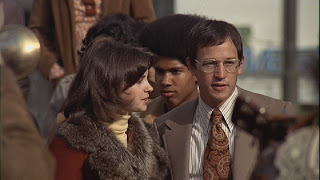It was an experiment in “happier” and “sadder”. It was the best of times, it was the worst of times. Facebook collaborated with some researchers on a psychological experiment on 700,000 of its users. It went something like this: add 20% more happiness and see what happens; add 20% more sadness and see what happens. The subjects of the study appeared to go with the flow, creating happy posts when fed happiness, and sad ones when fed an extra helping of sadness.
The internet explodes in outrage. How could Facebook abuse its position and add extra emotional shading to the newsfeeds of unsuspecting users? All of the big data merchants have this power. All of them assure us that they would never do such a thing. They are completely neutral, simply a transparent medium. Think of them as the Switzerlands of big-time data technology. (And as long as you don't know too much about the history of Switzerland, that'll seem just fine.)
The newsfeed is an interesting animal. It's the personalized stream of items that has been theorized over for a long time. If only we could give people what they want at the exact moment they need it, it wouldn't be perceived as advertising. Each person's newsfeed is unique, made of of selected interests, social graph and radiating out to a couple degrees of separation. Because of the personal nature of the selections that make up the newsfeed, it has the feel of an internal stream of consciousness. Your stream is unlike the stream of any other person. There are common elements, and there are moments where the streams cross, but each one is unique. As “individuals”, we identify strongly with our own feed; it's like no other.
The violation Facebook is charged with is similar to one we encountered in the 1970s — with subliminal advertising. Someone is airbrushing sex and death images into the ice cubes of liquor ads in magazines. Advertisers are intentionally targeting our unconscious minds, and there's no defense. We become like sleepwalkers, buying products without conscious intent. In our pragmatic, utilitarian society what could be more sinful?
We feel violated, some big corporation is messing with our insides — that feed is ours. It “is” us. All the while we walk through shopping malls filled with positive images designed to flatter and make us feel good. We watch television dramas that reinforce our moral values. We read magazines filled with an extra helping of happiness. The world as a feed that enters our ears and eyes is chock full of extra happiness. We already live inside a world that conditions our desires and provides positive reinforcement when we purchase the correct brands.
Facebook's error was to believe that it was an external feed like all the rest. In Bradley Kaye's book on Zen and Critical Theory called “The Boundless Open Sea” he describes the relationship between the internal newsfeed and the self.
Most Buddhists believe that actions are a direct result of a thought behind the action. Unethical actions are a direct result of untrained and messy thoughts. For the vast majority of people on this planet, thoughts pop up and appear as if they were completely natural. The vast majority of people never reflect on these thoughts. They come into the mind, make a cameo appearance and then leave without ever fully grounding themselves in anything solid or real. These untrained thoughts appear so natural they often unreflectively burst out as a set of spoken words. Habits and conditioning supersede the pathway to enlightenment and there is a way that people identify themselves with these untrained immature thoughts. There is no detachment from the thought process going on in these minds. The mind-images, or the mind-movies that are playing continue on as if they are an unstoppable force.
The streams of thought that Facebook appears to be contaminating with its extra helpings of happiness or sadness are already contaminated. Or rather, they are comprised largely of external memes and entities that make up the flow of thoughts rushing though our minds. The word “contamination” implies that there could be a pure state of cleanliness — as though we could take few squirts of anti-bacterial hand sanitizer and somehow massage our brains to remove the alien thoughts.
Bradley Kaye goes on to discuss how one might separate one's self from the flow of noise. The method does not involve prohibiting Facebook from adding or subtracting emotional shading to our newsfeeds.
The first step to liberating the mind is having an awareness that you are not your thoughts. To be aware that there is a voice in the mind and that this is the ego, not the true self. By sitting quietly, reflecting, and listening to the stammering voices that exist in the mind you diminish the Clamor of Being and can become completely detached from this white noise. It never completely stops because in modern society we are completely saturated with noise.
Comments closed








